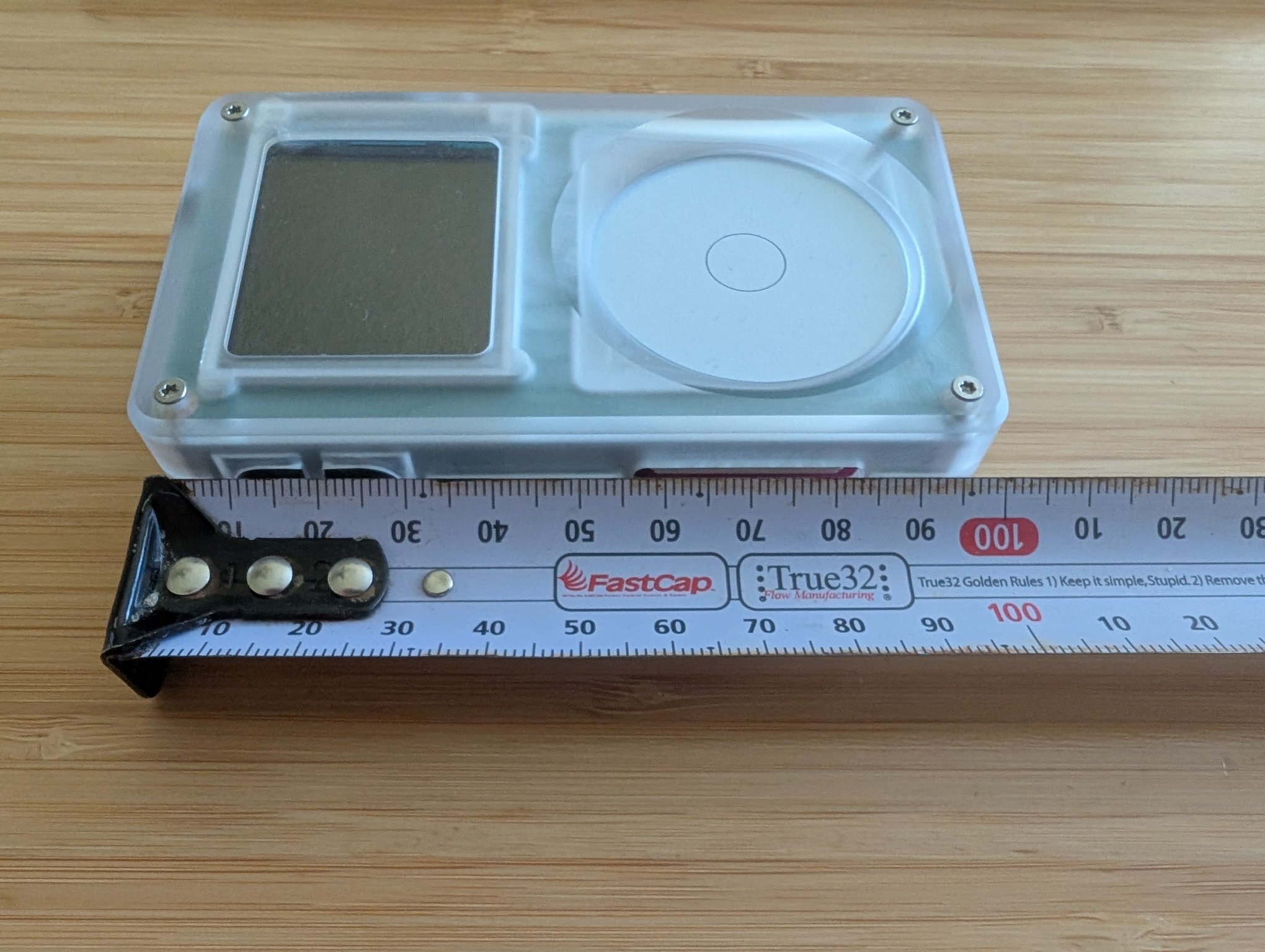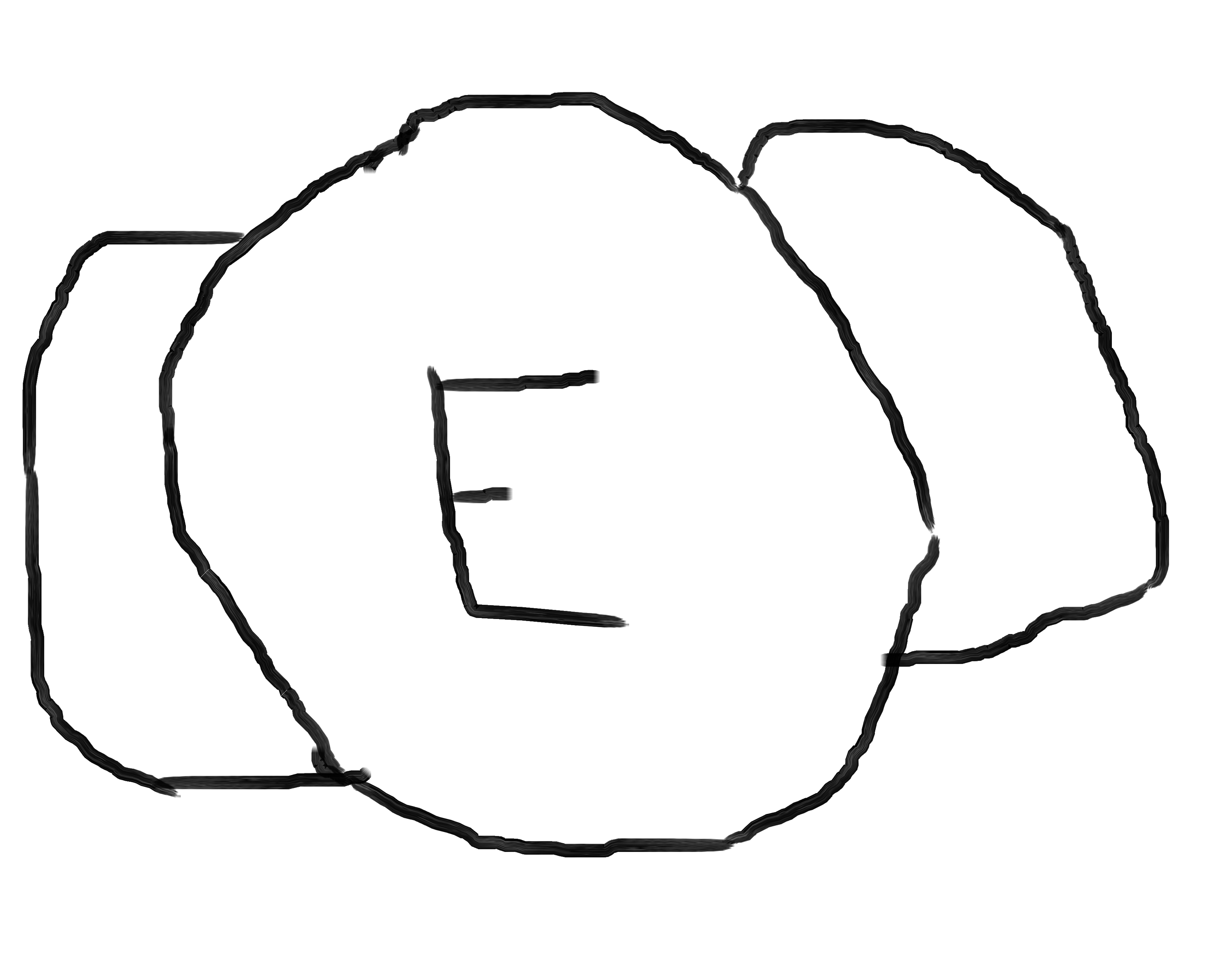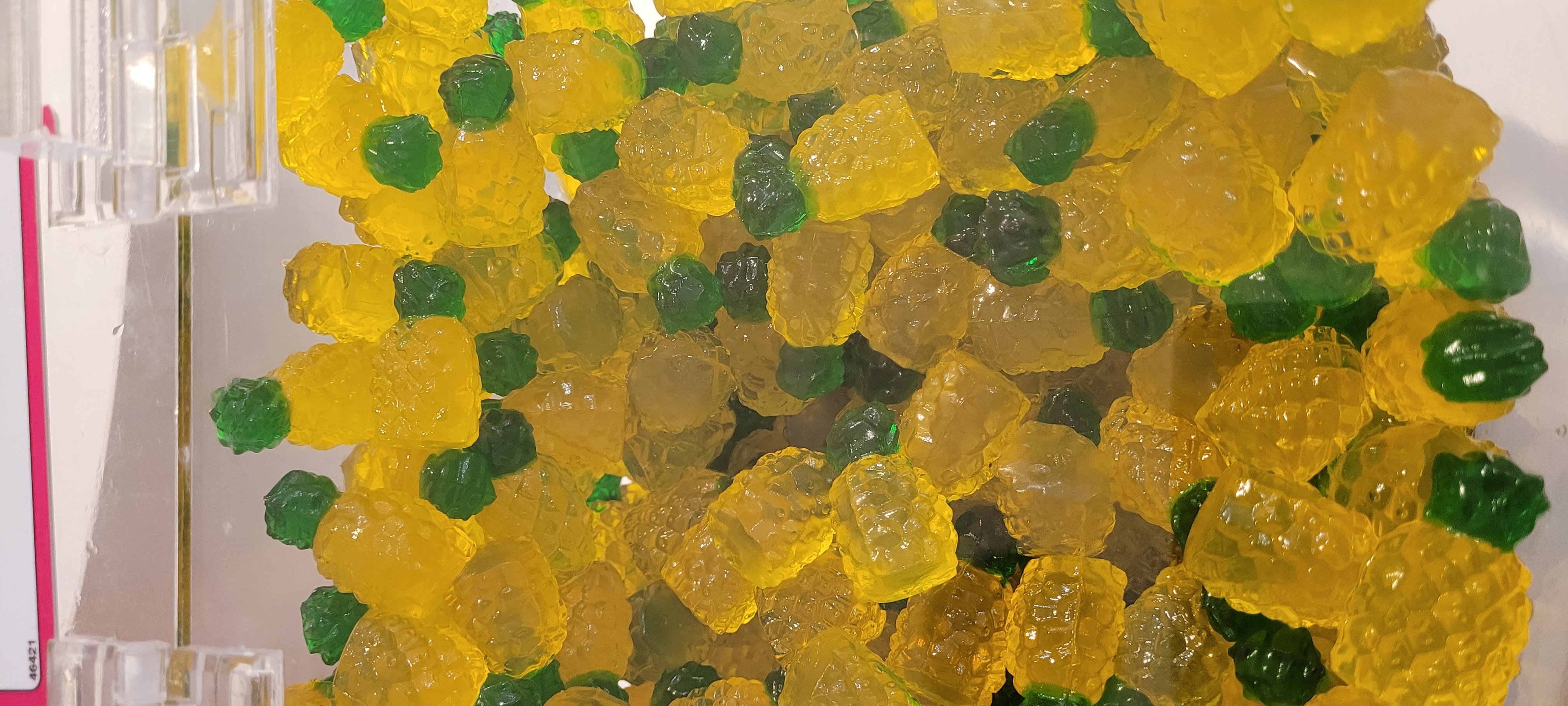For instance, a foot…is basically a foot length. So there’s this foot-measuring waddle some people do walking literally heel-to-toe to get a general sense of the space. An inch is kinda a finger width, etc (they’re all not perfect by any sense).
I’ve decided to just take the plunge and basically re-learn all my measurement systems because I’m seeing less and less of those being used. I started with just memorizing all the conversions but that’s literally just adding another step. Everything I own basically has settings to switch or show both measurements (like tape measures) so I’m just going to stop using Fahrenheit and the United states “Customary System” all together.
Any tips or things you’re taught or pick up on? There’s a funny primary school poem for conversion of customary liquid measurements,
Land of Gallon
Introducing capacity measurement to learners can be challenging. To make this topic more accessible and memorable, we can integrate creative and interactive activities into our teaching approach. Using storytelling, we can transform the sometimes daunting task of learning measurement conversions into a whimsical tale.
- In the Land of Gallon, there were four giant Queens.
- Each Queen had a Prince and a Princess.
- Each Prince and Princess had two children.
- The two children were twins, and they were eight years old.
Once students are familiar with the story be sure they see the connection between the story characters and the customary units of capacity measurement. If necessary, label the story pieces with their corresponding units of measure: queen = quart, prince/princess = pint, children = cups, 8 years old = 8 fluid ounces. You can reduce the number of customary units in the story based on student readiness. link
tl;dr looking for anything to remember the hierarchy and memorizing the metric and Celsius measurement system, sometimes explained in schooling or local sayings. (if I had an example for those systems I would give one lol).
1L of water is 1kg
It’s great that the units are linked like this. I actually had to use this once. I didn’t have a container to measure out 1liter of water, but I did have a kitchen scale that could measure 1,000 grams! 🙌🏽
Measuring liquids by mass is even more accurate because the volume is related to temperature, plus the surface tension and water’s tendency to climb up the walls of the container can make the volume readings ambiguous
deleted by creator
True, 1L are hard to find
milk comes in 1L boxes, for example, so pretty much everyone knows what a liter is.
sugar and flour come in 1kg bags and that’s roughly 1 liter too
Fellow American convert to the metric system. Converting, in my opinion, won’t get you very far in actually understanding the measurements. To this day, the conversion rate is something I have to dig through my memory for.
For me what helped with the temperature scale was breaking it into chunks based on what I would wear, 10°-15° would be a pullover sweatshirt, 15°-20° a track jacket, etc, which got me to stop focusing so much on the conversion. Eventually you just get a sense of these things, I think that most people can only really feel a difference in air temperature of about 1°C. 0° being the freezing point cutoff is super helpful for judging things like potential road conditions if it’s wet.
For distances I first got the sense of how far things were in kilometers by being a runner and knowing distances around my neighborhood as to how they lined up with running a 5k, 10k, etc. For meters, at my height and gait, my stride length is about a meter long. A little bit on the shorter side of things, but it still helped me get an idea as to what a meter looked like in physical space, even if it’s off a bit. Centimeters and millimeters are a different story. Hard to find perfect analogs in the world, but you’ll find something eventually. I think for example long grain rice can be ~1 cm in length for example.
The biggest lesson in my own journey and seeing a lot of people online talk about trying to do the conversion is that people get overly concerned with precision when first making the switch. If you actually think about most of our daily interactions with measurements, they’re much more approximate. For example, the difference between whether it’s 71°F or 73°F is rarely pointed out. The temperature is just “in the low 70s”. We say that something is “about 20 miles away” which is almost an implicit 7-8 mile range. I would guess 80% of the time, this is how we interact with the units we use, so focus on that. No one is going to get upset if they ask the temperature and you’re off by a few degrees C.
In terms of mnemonics like US kids get in school for some of these things, everything in the metric system is a multiple of 10 from everything else, which is what makes it great. Also remember that at room temperature, water’s density is 1 g/mL, so if one of capacity or weight is easier to visualize for you, it’s a shortcut to the other. Standard disposable water bottle in the US is 500 mL or half a kilogram of water.
If only metric time had caught on too…
The biggest lesson in my own journey and seeing a lot of people online talk about trying to do the conversion is that people get overly concerned with precision when first making the switch.
YES! I think this is because they’re converting back to imperial units. You can always tell when someone was thinking in imperial because the metric units are like 17.4C or 8.12mm or 98.7km/h. For sure, things don’t need to be that precise. When I convert either way I always convert to a nice number. 100 km/h -> 60mi/h
It’s just like translating language, you don’t translate the literal words of a sentence, you translate the overall idea.
Good information, I’ve been doing the temperature thing more and more but for cooking I haven’t switched (gonna have to refigure the food safety guidelines so I’m not putting myself in danger on that one).
I think you’ve convinced me to officially do a marathon, that seems like a great and healthy way to consider the larger distances and wrap my head around it!
I’ve heard something like: 30 is hot, 20 is nice, 10 is cold and 0 is ice.
Man you got some giant feet and sausage fingers lol
My 2 cents to some of the really good comments already mentioned. 1kg is 2 US lbs +10%. Learn what 10cm is, use that as base for small stuff Learn a stride that’s 1m. 1m is approx 3ft Get a good scale in grams Celcius is linear, Fahrenheit is not. Hence 0 freezing, 100 boiling, 50 is exactly half that amount of energy.
Now if you’re into engineering I’d recommend you grab yourself a caliper and measure some of the common products you can buy. You’ll notice that anything in 16th, 32th or even 64th is a most likely an approximation to a perfect size in mm.
It’s important to realize that the US is the only real producing country in the world using US customary. Relatively speaking there’s very little actual manufacturing being done in true US customary.
A good base is knowing milli is a thousandth and kilo is a 1000 1000 milligram = a gram, 1000 grams = a kilogram 1000 millililters = a liter, 1000 liters = a kiloliter 1000 millimeters = a meter, 1000 meters = a kilometer
Plus, they’re all connected. 1 gram of water is 1 milliliter and takes up 1 cubic centimeter.
A good base is knowing milli is a thousandth and kilo is a 1000
YES! I feel like a common pitfall people run into is trying to bust out all sorts of fancy prefixes, deka, hecto, centi, deci, etc and then people get overwhelmed by all of that.
The most common prefixes are kilo 1000x or milli 1/1000. That’s all you should focus on.
I mean centimeters is probably the most common in households and centiliters at least in cocktail recipes. But yes, you don’t really need deka, hecto or deci in your daily life and you can grow up not knowing they exist at all. It would also make things like tape measures too complicated to look at.
centimeters is probably the most common in households
I’m curious, where are you from? In the US, I’d say we think of centimeters as a pseudo-inch, so I think I understand why people would gravitate to centimeters here.
But do other countries use centimeters as much? I’m especially curious about really metric countries like Japan or (who else?) France? Germany? I wouldn’t be surprised if Canada or UK use centimeters.
Related: centimetres or millimetres
Most countries in the world are “really metric countries”. And yes we do use the cm a lot for measurements inside the 1-100cm range.
I’m from Germany and we use cm a lot. I can’t imagine not having anything between mm and m, the gap is huge. Those are probably the most used ones in daily life and km for distances farther than 999 m.
Here’s a common German tape measure next to a book, which is 20.6 cm (206 mm, 0.206 m) long:

Cool! Thanks for sharing!
Now that I think about it, I think I own a carpenter’s measuring tape. Maybe that’s why they don’t call out cm.

Also just to be clear, my measuring tape is definitely not a standard tape you can buy at a local hardware store. It took some effort for me to find a metric-only measuring tape.
I know some people in the building profession who habitually call out everything in mm, as oppose to most people where I am using cm for most household measurements. So I’m not surprised to see measuring tape (esp a carpenting one) ignoring the redundant cm
Interesting, I’ve never seen a tape measure like this. In the end it’s the same thing, just remove a zero and you have cm. That’s the magic of it.
But i understand now how you came to the conclusion that centi is not used that much.
I really hope the US will at some point adopt the objectively better metric system!
I really hope the US will at some point adopt the objectively better metric system!
Me too. I’m trying! 🤝
Plus, they’re all connected. 1 gram of water is 1 milliliter and takes up 1 cubic centimeter.
To heat said water by 1 degree celsius (or kelvin) you need one calorie. If one newton were to displace that water through the distance of one meter, the amount of work done would be 1 milijoule.
Ive never heard kiloliter, at that point I say a thousand liters, or a cubic meter.
Get ruler. Hold your arm out 90degrees, Measure from the tip of your finger 1 metreacross your body, and rember where that Metre ends on your body. Then you always have a reference for 1metre
I was taught this to measure electrical cable. For me it’s from my left shoulder bone to my right finger tips (or the right shoulder to left finger tips)
deleted by creator
YES! Do it brother! 👏 I’m US born and raised and I’ve voluntarily switched to metric a while ago. Metric is actually more intuitive to me now.
I started with just memorizing all the conversions but that’s literally just adding another step.
Personally, I think this is a mistake. What worked for me was to start building reference points in metric directly. No conversions.
- yes: “Oh, it’s nice outside. What temperature is it? 20C, great. I’ll remember I like 20C.”
- no: “I like 70F, what’s that in Celsius?”
- yes: “Wow. That’s long board. How long is it? 2m, great. I’ll remember 2m is long.”
- no: “What’s 6ft to meters?”
Don’t ask, “What’s this in metric?” just ask directly “How long/fast/heavy/hot is this thing?”
You need to get out there and start measuring and experiencing stuff. Measure parts of your body to build more reference points. For example, I know from the floor to my waist is about 1m, from the tip of my index finger to the first bend line is about 2.5cm. My weight is about 65kg. Normal body temperature is about 37C, but 38C and above is a fever. My mom’s house is about 30km away.
Switching temperature to C is pretty easy, that’s a good start. Here are some other tools that may help.
- meter only tape measure (I love this tape measure) measure the length of everything
- gram only kitchen scale measure the weight of all your food
- newton-meter only torque wrench tighten all the bolts
Also, did you know Amazon US limits the products available to us? But you can break out and shop from Amazon Japan, for example, and get products that aren’t available from Amazon US. I’ve found that Amazon Japan has way more metric-only options than other places.
I really like buying metric only tools because:
- it removes the possibility of relapse, forcing you to build new reference points
- it removes the possibility of other people messing with the units
- it removes clutter from the UI, making it easier to use
Eventually, you could switch your car too, but I wouldn’t recommend you do that right now. After a few months, you’ll start getting the hang of metric more. It really doesn’t take that long to adjust.
P.S. Does anyone know where I could get some metric-only measuring
cupscans, containers, vessels?I wonder if the reference thingy works for languages too.
Because thats why Kids are soo good at learning languages while adults have more issues learning new languages. Mainly because they want to see the word translations, etc. That would be hard for japanese or chinese I think as they work entirely different
I think it has t do with neuroplasticity.
I second this! I was in the US for a while and quickly realised that doing constant conversions was a PITA, so I learned some rough reference points in imperial.
I think it’s good to get some small and some large reference points, which make it easy to guesstimate other things based on what you know. Mine were (given in metric here):
- A glass of beer is 0.5 L.
- A big barrel is about 200L (0.2 m^3).
- My walk to work is 3 km, a long hike is 25 km.
- A very short person is about 150 cm, a very tall one is about 2 m.
- I can deadlift about 100 kg, and bicep curl around 15 kg.
- A potato is on the order of 100g, while a watermelon is around 2kg.
- 70 C is a nice sauna, 25 C is a nice summer day, 10 C is chilly, 0 C is sleet-temperature, -10 C is powder snow cold (depending on where you live the colder temps might be more or less relevant)
Figure out some similar things for yourself, and it’ll be relatively easy to think along lines like “That walk was a bit further than my way to work, so it’s probably about 4km”, or “that box was heavy, but far from 100 kg, so it’s maybe around 30 kg.”
Bonus points if you try some guessing like that and double check afterwards to tune in your feeling for different measurements.
As a European, I have never used measuring cups. Our recepies call for ingredients to be measured in Milliliters for water and milk and Grams for everything else. We use cans like these for volume measurements: https://www.idealo.de/preisvergleich/OffersOfProduct/204600175_-messbecher-935000-0-5-liter-bruchsicher-huenersdorff.html
never used measuring cups … We use cans
Sure, yeah, that’s what I meant. Some physical artifact I can use to measure liquid in ml.
These look perfect! Thanks!
Meters is extra easy if you’ve played Minecraft because you know you need a two-block height for head clearance, and you can estimate the sizes of other things from there.
Minecraft is secretly bringing metric to the next generation.
I’m just going to start saying ‘blocks’ instead of metres to the youth from now on. I’ll get them used to it, then casually mention ‘kiloblocks’ one day and watch their face as they realise.
deleted by creator
P.S. Does anyone know where I could get some metric-only measuring cups?
The key is to never use measuring cups, stick to the scale for everything. Using recipes made with mass is the best way to do it, but if you are trying to adapt a volume based recipe, look at the serving size on the food package; it should be given in volume and mass. For example my king arthur brand 00 pizza flour serving size is 1/4 cup (30 g).
For Celsius:
30 is warm
20 is nice
10 is chilly
0 is ice
-10 is Ice+
Nah, 40 is hot, 30 is warm, 25 is nice, 20 is chilly, 15 is cold, Below 10 is very cold
(For me personally at least, in Melbourne)
I just learned some basic things and go from there.
A Ruler is Ruler 12 inches or 30 cm
A meter is roughly equivalent to a yard slightly more and both are like 1 big step
And then i just remember that theres 2.2 lbs per kg
1.6 kms per mile
A small trick is to measure your own hand. How big is your fingers spread all the way? That will always be a good quick measure. Like this: 🤙and 🤘.
And for the hierarchy:
Kilo means 1000 of something
Centi means 1/100.
Mili means 1/1000.kilo + meter = 1000 meter. centi + liter = is a cube of water that measures
1 cm all around, that actually 1/100 of a liter. And 1/100 of a kilograms if it is water.
Edit: 1cm cube is a mililiter, because 10x10x10 its 3dimensional as Moody pointed out.A 1cm cube is 1ml and not 1cl.
One litre is a 10x10x10cm cube.
Thanks for correcting me. Messed that up. Have an excuse but don’t worth mentioning it :D
Good idea with the hands, I kinda already had this with the other system (different methods though) so now I gotta do the new ones and sear that into my brain. I’ve always been interested in a tattoo like the myth busters guy with a ruler on his forearm but I like the hang-ten one and seems cheaper/less painful.
looking for anything to remember the hierarchy and memorizing the metric and Celsius measurement system, sometimes explained in schooling or local sayings. (if I had an example for those systems I would give one lol).
This is how I was taught it in school:

A person who buys some material, Thinks to themselves managerial, I could use grams or litres, Maybe even amps or square meters, At least it isn’t Imperial.
For temperature:
Water freezes at 0, boils at 100. Room temperature 20 degrees Celsius. Normal body temp 37 degrees.
Trivia of minus 40 Fahrenheit being the same as minus 40 Celsius.
Height and weight are usually still thought of in imperial (canadian here), so I think of myself as 6’2", instead of 188 cm.
Volumes and lengths and weights are related. One cubic cm is one mL of liquid. One cubic centimeter of water weighs one gram. One thousand mL of water makes one Liter, which weighs one kilogram.
2.205 ponds makes one kilogram.
Shifting between miles and km is a pain in the ass, given the 1.6 km per mile.
Miles and Kilometers are very close to the golden ratio. So adjacent Fibonacci numbers can be used to approximate them.
5 mi is about 8 km
8 mi is about 13 km
etc
This advice is also golden!
1 mL (or cubic centimeter) of water weighs 1g, not 1 mg. 1 mg would be 1 microliter of water, or one millionth of a liter.
Yes! My bad, will edit.
1 calorie is the heat required to increase the temperature of 1 ml of water by 1 degree
I’m in Canada, and learning French in school actually helped me with fractional measurements since French is based on Latin.
Cent is 100 in French, so 1/100 meters is a centimeter
Mille is 1000 in French, so 1/1000 meters is a millimeter
Dix is 10 in French, so 1/10 meters is a decimeter (this is last because it’s not super helpful since you never see deci- units in the wild outside of niche applications)
And for the powers of 10, we only really talked about kilo (1000) in school, but I was interested in computers since I was a child so I figured out mega, giga, terra, etc fairly early on.











